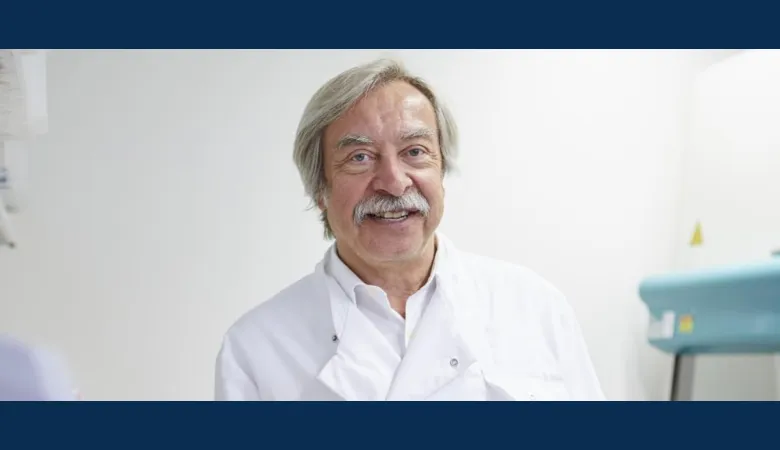Spotlight on COVID: Searching for therapeutics
Dr Miraz Rahman discusses research aiming to find new therapeutics to treat COVID
25 May 2021
There are 250,000 cases of sepsis in the UK a year, with an estimated 48,000 people losing their lives. Yet until 2016, there was no globally-accepted clinical criteria to ensure consistent diagnosis of sepsis and septic shock.
There are 250,000 cases of sepsis in the UK a year, with an estimated 48,000 people losing their lives. Yet until 2016, there was no globally-accepted clinical criteria to ensure consistent diagnosis of sepsis and septic shock.
Research by King’s has led to enormous breakthroughs in this area. Professor Manu Shankar-Hari, a NIHR Clinician Scientist, Professor of Critical Care Medicine and a Consultant in Intensive Care Medicine at Guy’s and St Thomas’ NHS Foundation Trust, led the redefinition of septic shock, generated criteria for diagnosis of septic shock and examined patterns in sepsis survival in England. His work has contributed to the World Health Organisation recognising sepsis as a global health priority.
Professor Shankar Hari, from the School of Immunology & Microbial Sciences, said: “Sepsis is a devastating illness. Those who recover from sepsis (referred to as sepsis survivors) have significant health care needs. My translational research programme focuses on ways to the improve the diagnosis, and treatment of sepsis patients, by harnessing signals from the immune system alternation in sepsis.
“Overall, the NIHR Clinician Scientist Award has helped me develop an unique research skill-set that has proven invaluable in during the pandemic, to collaborate widely, and to generate cutting edge research that has immediate clinical relevance.”
The landscape before sepsis clinical criteria:
According to the 2017 Global Burden of Diseases report, there were nearly 50 million cases of sepsis and 11 million resultant deaths worldwide. Despite the global crisis, which disproportionately affected low- or middle-income countries, there was no internationally agreed clinical criteria for sepsis.
Sepsis is a serious complication of infection and occurs when the body’s immune system goes into overdrive in response to an infection. Symptoms and clinical signs differ between patients, which makes it tough to spot. There is no diagnostic test for sepsis. Sepsis is associated with multiple organ failure and one in three patients with sepsis admitted to UK intensive care units die in hospital.
Although sepsis definitions were put forward in 1991 and 2001, there was no unifying criteria. It was clear the definitions allowed for variability in diagnosis, which may put patients at risk.

In 2016, a 17-member international task force, including Professor Shankar-Hari, led the redefinition. The definition and accompanying clinical criteria were data driven which made the diagnosis more uniform.
Septic shock was also redefined to be broader than cardiovascular dysfunction. The new definition showed septic shock was also associated with cellular and metabolic abnormalities.
Long-term outcomes for sepsis survivors
With a robust definition and clinical criteria in hand, Professor Shankar-Hari’s next project was to lead the UK’s first comprehensive epidemiological study to examine the long-term outcome for sepsis survivors, using data from the Intensive Care National Audit and Research .
The team analysed data from 94,748 sepsis survivors, who had recovered following their admissions with sepsis to 200 intensive care units in England.
The research found that 15% of sepsis survivors died within a year of leaving hospital, with a further 6% to 8% dying every year over the next five years.
Nearly a third of survivors were hospitalised again within 90-days of being discharged.
Speaking at the time, Professor Shankar-Hari said of the research: “Being able to identify patients at the highest risk is key for us as clinicians, as it helps to plan ongoing care. Given what we now know, we will be trying to find out what the best interventions are to prevent these deaths, how to identify those sepsis survivors who are at greatest risk and more likely to benefit the most from such interventions. More importantly, this new research informs the health policy debate around how to plan follow-up care of sepsis survivors and critical illness survivors in general.”
In September 2020, the work was renewed by the launch of a tool that can predict the risk of readmission to hospital or death in the first year after leaving hospital for adult survivors of sepsis.
The tool, which is the first of its kind, is particularly timely as both survivors of sepsis and COVID-19 have risks of complications or death after leaving hospital.
The team determined eight factors which affected risk for sepsis survivors: previous hospitalisations in the preceding year, age, socioeconomic status, pre-existing dependency, numbers of pre-existing conditions, admission type, site of infection and admission blood haemoglobin level. Using these, researchers developed a statistical model that could give an overall risk score for rehospitalisation or death in the first year after leaving hospital.

Sepsis during the COVID-19 pandemic
The work by Professor Shankar-Hari was a valuable underpinning for COVID-IP, a collaborative project between King’s, Guy’s and St Thomas’ Foundation Trust and The Francis Crick Institute. The project, led by Professor Adrian Hayday, Professor of Immunobiology at the School of Immunology & Microbial Sciences, assesses how the immune system changes with COVID-19 infection.
As COVID-19 became a global pandemic, it became critical to understand how people’s immune responses to the SAR-CoV-2 virus might be failing, leading to life-threatening disease. The COVID-IP study led by Professor Hayday clearly associated poor prognosis with a very specific set natural molecule, called IP10, and a deficiency in immune system cells called T Cells that ordinarily help to fight disease.
Professor Adrian Hayday said: “I was inspired by the extraordinary, selfless commitment of our young researchers who immediately devoted themselves to COVID-19 research, going from the first patient to a major peer-reviewed publication in less than 150 days! Moreover, it’s gratifying that the findings may genuinely help doctors manage patient care in settings where the disease is still tragically rampant or may become so again.”
As the COVID-19 pandemic remains of global importance, Professor Shankar-Hari and Professor Hayday continue their ground-breaking research.